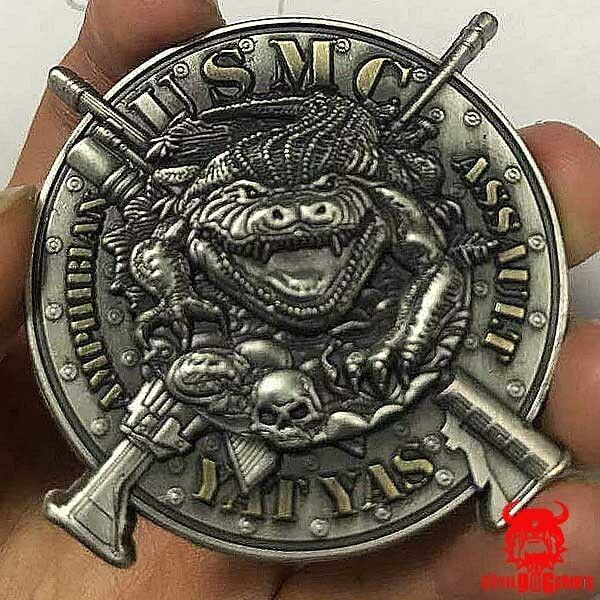USMC And Japanese Military Conclude Iron Fist, according to a statement released by the Marine Corps. The exercise, which involved over 400 personnel from both countries, was held at Camp Pendleton in California and Marine Corps Air Ground Combat Center Twentynine Palms. Devildog Shirts created a fierce line of Marine Corps challenge coins for just such an occassion.

Iron Fist is a joint training exercise that is designed to improve the interoperability and coordination between the US and Japanese military forces. During the exercise, participants conducted various activities, including amphibious assault, live-fire training, and urban warfare training.
The exercise provides an opportunity for the US and Japanese forces to exchange tactics, techniques, and procedures, as well as to build trust and strengthen the alliance between the two nations. It also serves as a critical training opportunity for both forces to enhance their readiness and capability to operate together in a range of potential scenarios.
The successful completion of the first Japan-based Iron Fist exercise demonstrates the commitment of the United States Marine Corps and Japanese forces to maintaining a strong and enduring partnership, and their readiness to respond to any potential security challenges in the Indo-Pacific region.

Japan’s military, formally known as the Japan Self-Defense Forces (JSDF), is a modern and highly advanced military organization. Following World War II, Japan was stripped of its military capabilities and was placed under the protection of the United States. However, in 1954, Japan re-established its military with the creation of the JSDF, which has since become one of the world’s most advanced and well-equipped military forces.
The JSDF is composed of three branches: the Ground Self-Defense Force (GSDF), the Maritime Self-Defense Force (MSDF), and the Air Self-Defense Force (ASDF). Each branch has its unique capabilities and is responsible for different aspects of Japan’s defense.
The GSDF is responsible for ground-based operations and is primarily composed of infantry units. It has a total strength of around 150,000 personnel and is equipped with a variety of advanced weaponry, including tanks, artillery, and helicopters. The GSDF is primarily focused on defending Japan’s mainland, but it is also capable of conducting operations overseas if necessary.
The MSDF is responsible for Japan’s maritime defense and has a total strength of around 50,000 personnel. It is equipped with some of the world’s most advanced warships, including destroyers, submarines, and aircraft carriers. The MSDF is responsible for protecting Japan’s territorial waters, conducting search and rescue operations, and providing support for disaster relief efforts.
The ASDF is responsible for Japan’s air defense and has a total strength of around 50,000 personnel. It operates a wide range of aircraft, including fighters, helicopters, and transport planes. The ASDF is responsible for defending Japan’s airspace and providing support for ground-based operations.
In recent years, Japan has been working to modernize and expand its military capabilities in response to regional security challenges. This has included the development of new technologies, such as advanced missile defense systems and next-generation fighter jets, as well as the establishment of new military units, such as a cyber defense unit and a space unit.
One of the most significant developments in Japan’s military in recent years has been the reinterpretation of the country’s pacifist constitution. In 2015, Japan passed new legislation that allowed its military to engage in “collective self-defense,” which means that it can now provide military support to allies under attack, even if Japan itself is not directly threatened.
Despite these changes, Japan’s military remains constrained by its constitution, which prohibits the country from maintaining offensive military capabilities or engaging in overseas combat operations. However, Japan’s military capabilities continue to grow, and it remains one of the most advanced and capable military forces in the world.
For more information about USMC And Japanese Military Conclude Iron Fist please contact us at hq@devildogshirts.com.
